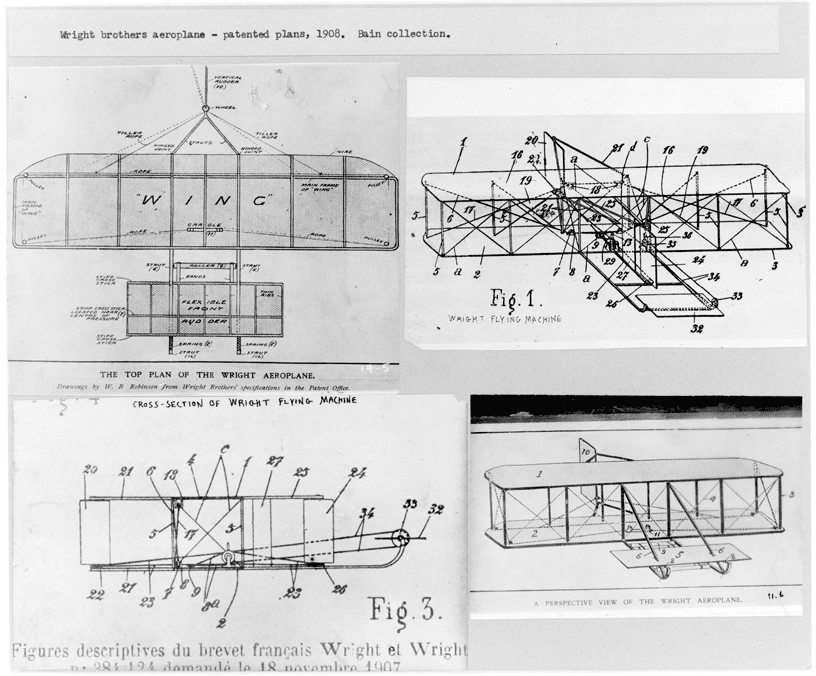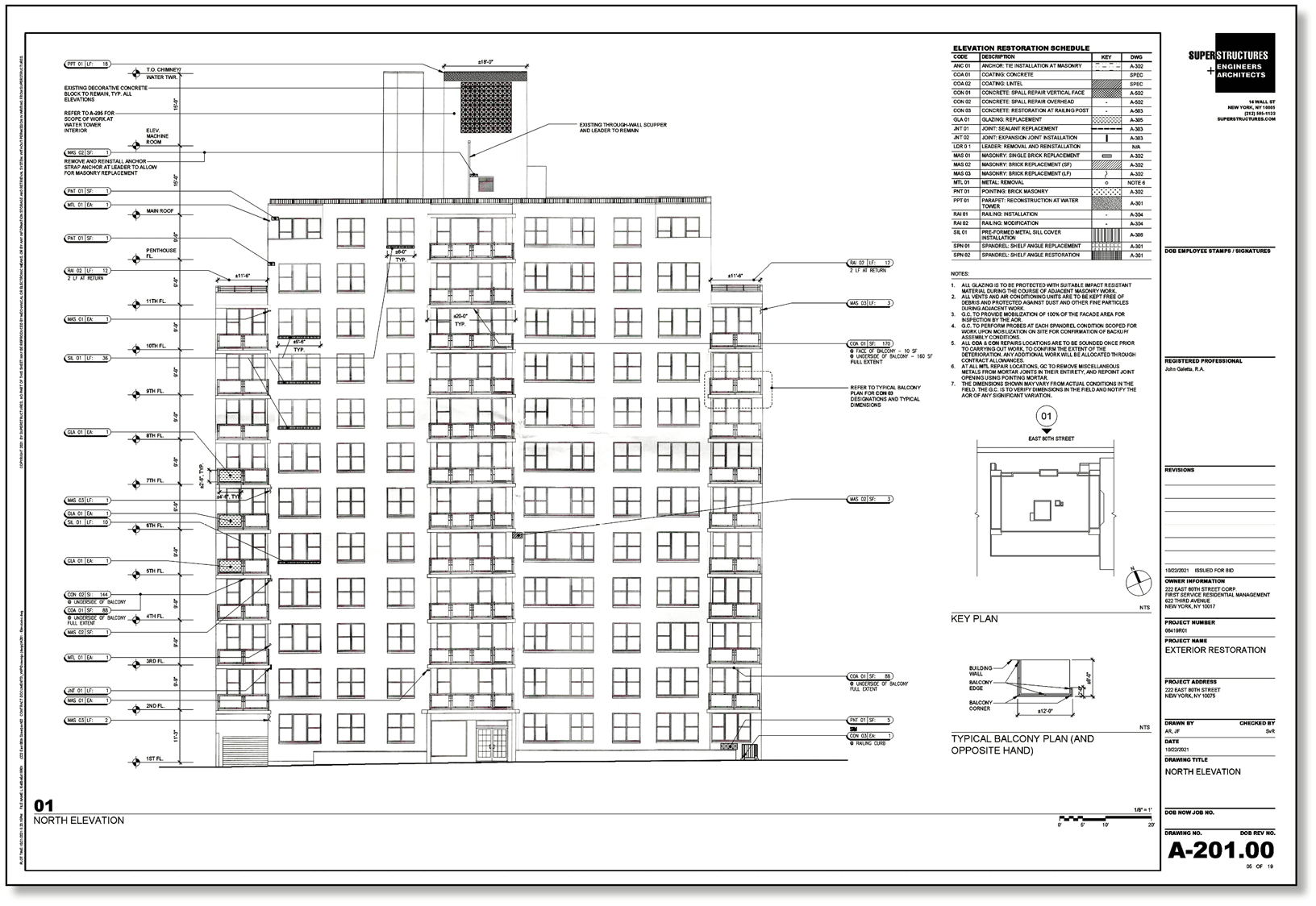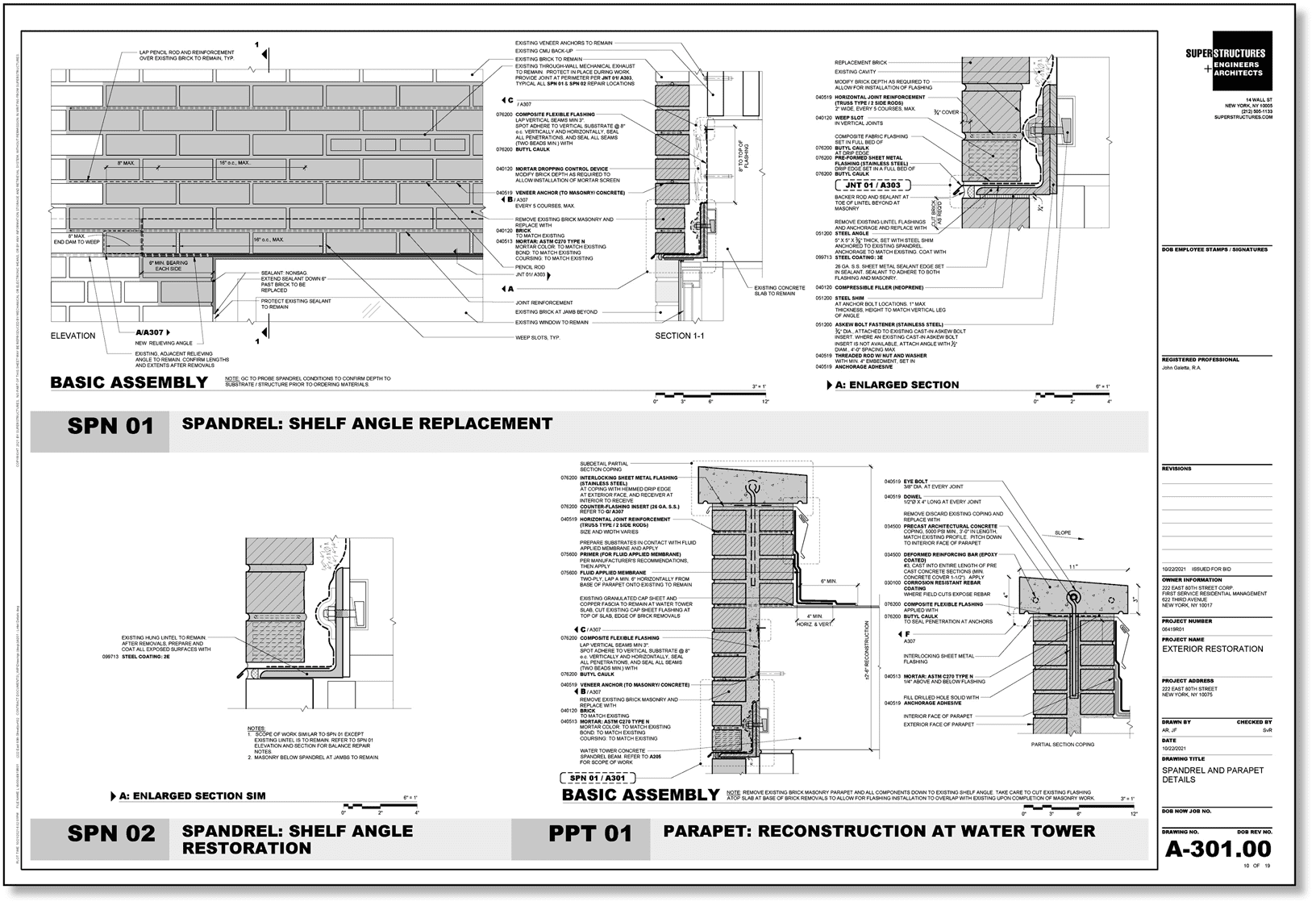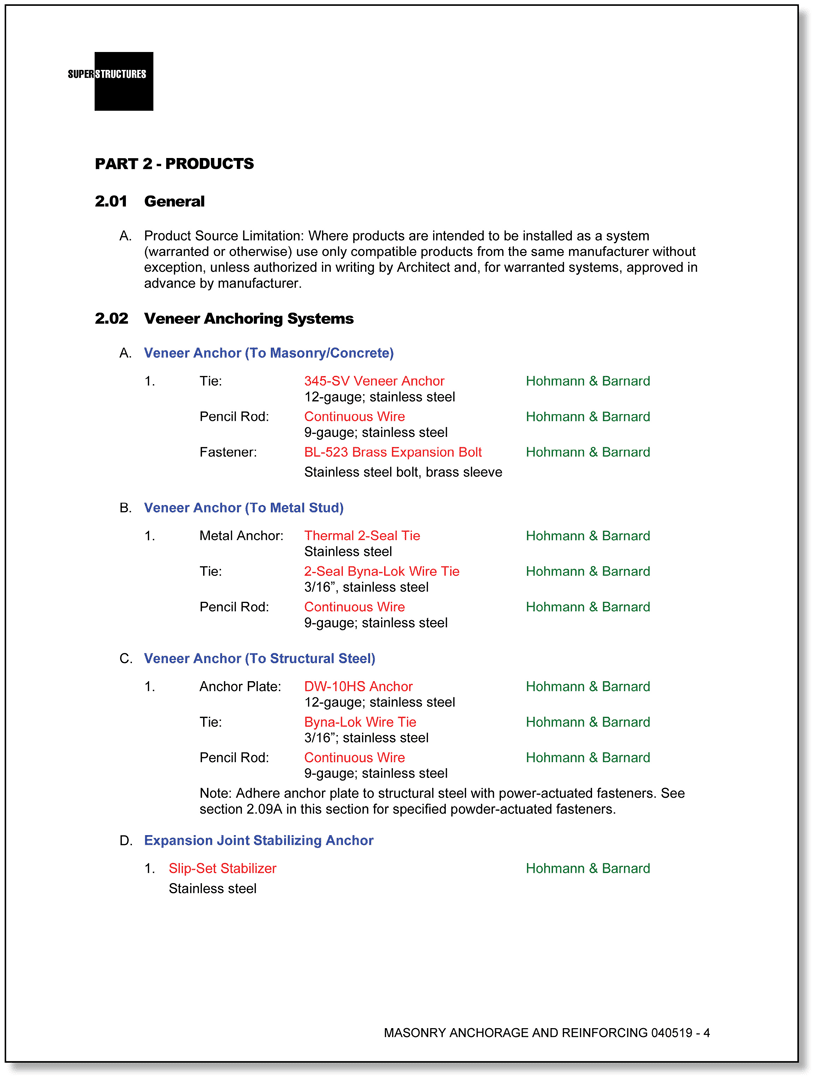In the restoration process, one of the main roles of the Engineering / Architectural (E/A) firm is the production of Contract Documents (CDs).
CDs comprise a detailed description of configurations of products and assemblies that the restoration contractor, an entity distinct from the E/A, is responsible for executing and providing.
The CDs contain solutions to issues negatively impacting the building, based upon the E/A’s prior investigation and analysis. (As remediation progresses, representatives of the E/A will visit the site periodically to observe the contractor’s execution of the work delineated in the CDs).
Orville and Wilbur Wright, the inventors and builders of the first airplane, credited their achievement to a piece of advice their mother gave them when they were boys. She said, “If you get it right on paper, it'll be right when you build it.”
Mrs. Wright’s advice holds equally true for an exterior restoration project today.

The key to success is to address all restoration issues systematically, on paper, before a contractor is even selected. CDs should clearly indicate the type, quantity, and location of the work that needs to be performed. Each piece of information required by the contractor should be provided in a consistent location and format.
A set of CDs generally includes the construction drawings (or the antiquated but still understood term “blueprints”), technical specifications, and the project manual.
E/As today have a major advantage over the Wright Brothers: computer technology. While Orville and Wilbur had only pencil and paper, we have networked and cloud-connected computers running cutting-edge drafting, asset management, and imaging systems. But technology is no substitute for first principles.
The Four Cs
The Construction Specification Institute enumerates four “Cs” of a well-crafted set of construction documents: they must be correct, complete, clear, and concise.
They should include the whole truth and nothing but the truth, i.e., all relevant information, and only relevant information.
In exterior restoration, it’s tempting to say, “we’ll wait until the contractor is on board, and figure it out in the field.” Well-prepared CDs head off this impulse, which can be inefficient and costly.
Construction Drawings

Construction drawings for exterior projects typically include background drawings that depict the key architectural elements of the existing building. On this drawing (called a building elevation), markers are overlaid that delineate the location and extent of the work to be performed by the contractor at each location. For CDs prepared by SUPERSTRUCTURES, each marker contains the following information:
1) the precise location where the restoration work is to be performed
2) an identification code that defines a specific restoration assembly required at that location
3) the quantity of work to be performed at that particular location
Construction drawings also include detailed “restoration assembly” drawings that depict the precise arrangement of components and the products or materials associated with each restoration assembly.
Construction drawing sheets generally measure about 24'' x 36''
Restoration Assemblies

Technical Specifications
The technical specifications define with further precision the products and materials identified in each restoration assembly. Specifications are usually bound in an 8.5'' x 11'' booklet.
Sometimes it’s tempting and easier, though less precise, for the E/A to describe an intended solution in writing in the technical specification, rather than explicitly delineating it and including it in the drawings.
But the Wright Brothers’ drawings did not say “airfoil: shape as required.” Similarly, language like “replace flashing as required” in the technical specifications (or on a set of drawings for that matter) leaves significant issues unresolved.
SUPERSTRUCTURES’ rule: Don't describe an intended outcome verbally if you can draw it. Each of our restoration assemblies is a complete graphic depiction of a discrete scope of work to be accomplished. Every instruction that the contractor requires is indicated graphically in the drawing. Every material or component, down to a masonry weep slot, is drawn.
Our technical specifications therefore, are detailed listings of acceptable products or materials explicitly called out in our drawings. In our view, brevity of specifications is a virtue.

The Project Manual
The project manual, usually bound together with the technical specifications, contains administrative and contractual information. It typically includes bidding procedures for the invited contractors, as well as conditions of the contract for construction. It stipulates, for example, insurance and bonding requirements, guarantee periods, and project completion date. It addresses procedural issues such as who provides electricity, which elevators may be used, and permitted working hours.
The project manual often contains a specimen contract (including any riders and supplemental provisions) prepared by the client’s attorney that the successful bidder will be required to complete and execute. If contractors know the extent of client requirements before submitting their bids, it minimizes post-selection negotiation between the client and the successful bidder, potentially shaving several weeks off the construction schedule.
While each component of CDs—construction drawings, technical specifications, and the project manual—is important to a successful restoration project, drawings are the key to satisfying the four Cs, communicating solutions correctly, completely, clearly, and concisely.
14 Wall Street, 25th Floor, New York, NY 10005
(212) 505 1133
info@superstructures.com
Subscribe to SuperScript, our email newsletter.